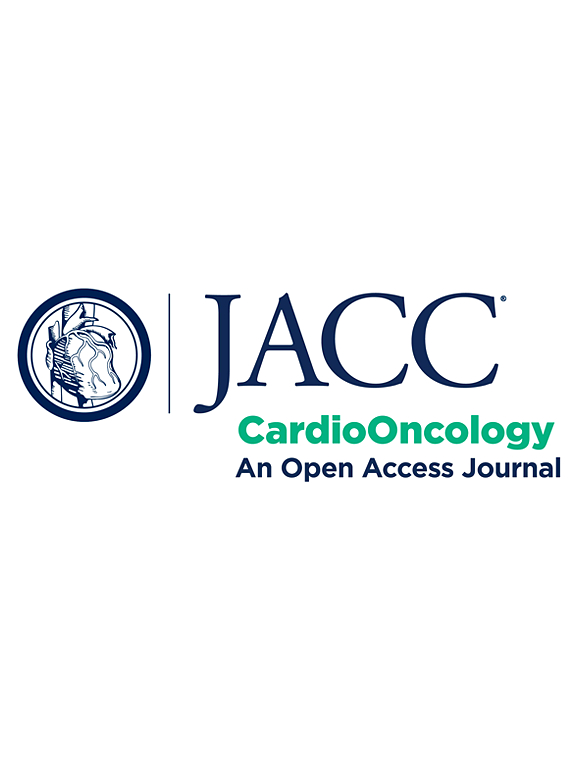利用多基因风险评分预测癌症幸存者的心力衰竭
IF 12
1区 医学
Q1 CARDIAC & CARDIOVASCULAR SYSTEMS
引用次数: 0
摘要
背景癌症幸存者发生心力衰竭(HF)的风险会增加,但预测个体发生 HF 的风险却很困难。用于 HF 预测的多基因风险评分(PRS)总结了个体特有的多种基因变异的综合效应。方法使用国际疾病分类-第 10 次修订代码确定癌症和 HF 诊断。使用社区动脉粥样硬化风险(ARIC)高频评分(ARIC-HF)计算高频风险。根据全球生物库荟萃分析倡议(Global Biobank Meta-analysis Initiative)计算出 HF 的 PRS(PRS-HF)。结果在排除 2644 名同意前患有 HF 的参与者后,基线确定了 440813 名未患癌症的参与者(平均年龄 57 岁,53% 为女性)和 43720 名癌症幸存者(平均年龄 60 岁,65% 为女性)。在对慢性肾病、总体健康评分和总胆固醇进行调整后,ARIC-HF 和 PRS-HF 均可显著预测心房颤动的发生。PRS-HF 在预测癌症人群(AUC:0.552;95% CI:0.539-0.564)和非癌症人群(AUC:0.561;95% CI:0.556-0.566)的房颤方面表现不佳。然而,ARIC-HF 可预测非癌症人群中的 HF 事件(AUC:0.804;95% CI:0.800-0.808),在癌症幸存者中的表现也可接受(AUC:0.748;95% CI:0.737-0.758)。本文章由计算机程序翻译,如有差异,请以英文原文为准。
Use of Polygenic Risk Score for Prediction of Heart Failure in Cancer Survivors
Background
The risk for heart failure (HF) is increased among cancer survivors, but predicting individual HF risk is difficult. Polygenic risk scores (PRS) for HF prediction summarize the combined effects of multiple genetic variants specific to the individual.
Objectives
The aim of this study was to compare clinical HF prediction models with PRS in both cancer and noncancer populations.
Methods
Cancer and HF diagnoses were identified using International Classification of Diseases-10th Revision codes. HF risk was calculated using the ARIC (Atherosclerosis Risk in Communities) HF score (ARIC-HF). The PRS for HF (PRS-HF) was calculated according to the Global Biobank Meta-analysis Initiative. The predictive performance of the ARIC-HF and PRS-HF was compared using the area under the curve (AUC) in both cancer and noncancer populations.
Results
After excluding 2,644 participants with HF prior to consent, 440,813 participants without cancer (mean age 57 years, 53% women) and 43,720 cancer survivors (mean age 60 years, 65% women) were identified at baseline. Both the ARIC-HF and PRS-HF were significant predictors of incident HF after adjustment for chronic kidney disease, overall health rating, and total cholesterol. The PRS-HF performed poorly in predicting HF among cancer (AUC: 0.552; 95% CI: 0.539-0.564) and noncancer (AUC: 0.561; 95% CI: 0.556-0.566) populations. However, the ARIC-HF predicted incident HF in the noncancer population (AUC: 0.804; 95% CI: 0.800-0.808) and provided acceptable performance among cancer survivors (AUC: 0.748; 95% CI: 0.737-0.758).
Conclusions
The prediction of HF on the basis of conventional risk factors using the ARIC-HF score is superior compared to the PRS, in cancer survivors, and especially among the noncancer population.
求助全文
通过发布文献求助,成功后即可免费获取论文全文。
去求助
来源期刊

Jacc: Cardiooncology
Multiple-
CiteScore
12.50
自引率
6.30%
发文量
106
期刊介绍:
JACC: CardioOncology is a specialized journal that belongs to the esteemed Journal of the American College of Cardiology (JACC) family. Its purpose is to enhance cardiovascular care for cancer patients by publishing high-quality, innovative scientific research and sharing evidence-based knowledge.
The journal aims to revolutionize the field of cardio-oncology and actively involve and educate professionals in both cardiovascular and oncology fields. It covers a wide range of topics including pre-clinical, translational, and clinical research, as well as best practices in cardio-oncology. Key areas of focus include understanding disease mechanisms, utilizing in vitro and in vivo models, exploring novel and traditional therapeutics (across Phase I-IV trials), studying epidemiology, employing precision medicine, and investigating primary and secondary prevention.
Amyloidosis, cardiovascular risk factors, heart failure, and vascular disease are some examples of the disease states that are of particular interest to the journal. However, it welcomes research on other relevant conditions as well.
 求助内容:
求助内容: 应助结果提醒方式:
应助结果提醒方式:


